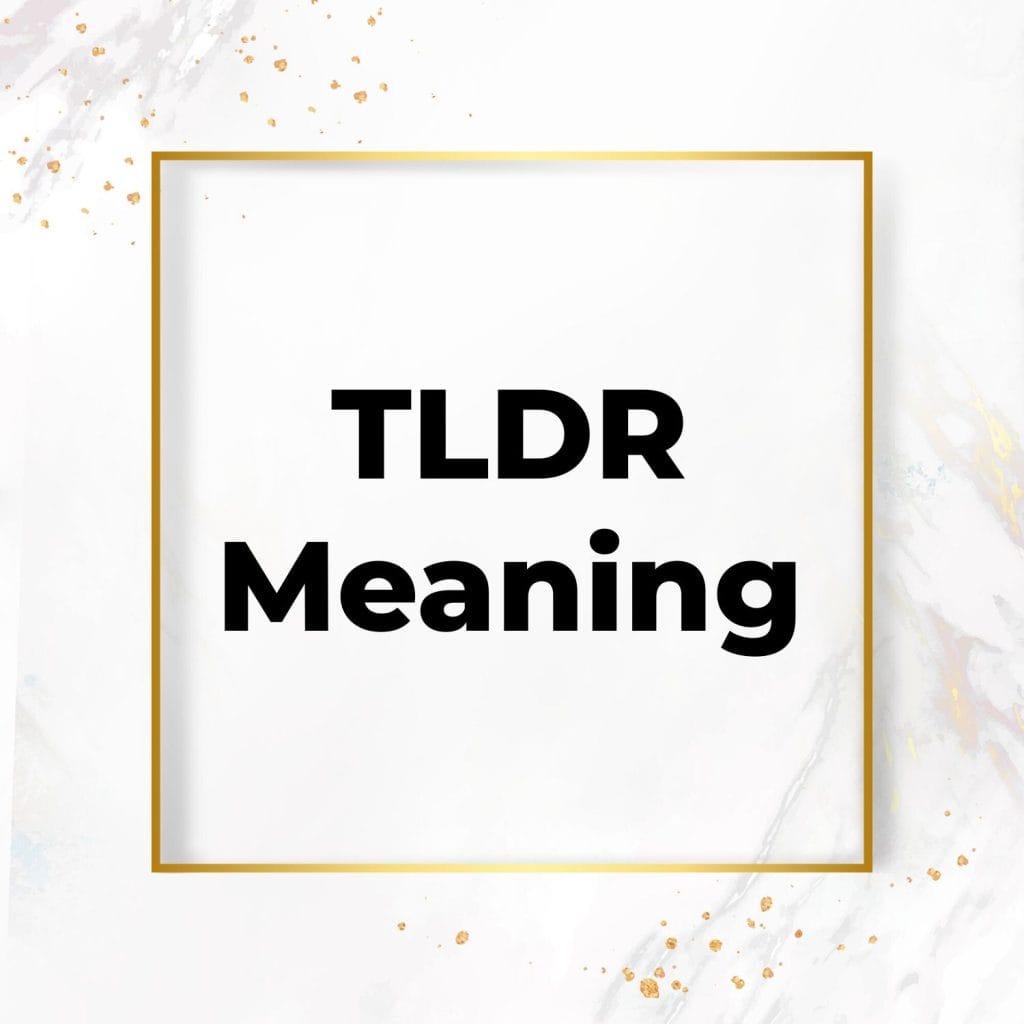
In today’s fast-paced digital world, abbreviations and acronyms are prevalent, and one of the most commonly used terms is TLDR. But what does TLDR actually mean? This article aims to provide an extensive understanding of the TLDR meaning, its origins, applications, and relevance in modern communication.
What Does TLDR Stand For?
TLDR stands for “Too Long; Didn’t Read.” It is typically used to summarize lengthy content, providing readers with a concise takeaway when they do not have the time or inclination to read the entire text. The acronym is often followed by a brief summary or key points to highlight the essential aspects of the original content.
Origins of TLDR
The term TLDR emerged in the early days of the internet, particularly in online forums and discussion boards where users frequently posted lengthy messages. As a way to enhance communication efficiency, users began including TLDR at the end of long posts. This allowed readers to quickly grasp the main ideas without sifting through excessive detail.
How TLDR is Used in Different Contexts
1. Online Forums and Discussions
In online forums, TLDR has become a staple, especially in threads where discussions can spiral into lengthy arguments or detailed explanations. By including TLDR, users can offer a quick summary, ensuring that those with limited time can still engage meaningfully with the content.
2. Social Media
On social media platforms, the character limit often forces users to condense their thoughts. However, for longer posts or articles shared via links, TLDR can be a useful tool. It encourages interaction by prompting users to read the full article while providing a snapshot of the content.
3. Blogs and Articles
Many bloggers and content creators utilize TLDR sections to improve user experience. A well-placed TLDR can draw readers in, giving them a reason to read further. This practice not only caters to a time-strapped audience but also enhances the overall readability of the article.
Benefits of Using TLDR
1. Enhanced User Engagement
Providing a TLDR at the beginning or end of an article can significantly enhance user engagement. Readers are more likely to engage with content when they know they can quickly access the key points. This increases the likelihood of shares and comments, further boosting visibility.
2. Improved Comprehension
By summarizing lengthy text, TLDR helps readers comprehend the essential points without being overwhelmed by excessive detail. It breaks down complex ideas, making them more accessible to a broader audience.
3. Increased Accessibility
In a world where attention spans are diminishing, TLDR makes content more accessible. Whether it’s a technical article, an in-depth analysis, or a personal blog post, TLDR allows individuals of varying backgrounds to grasp the main ideas without getting lost in jargon or lengthy explanations.
Best Practices for Writing a TLDR
1. Be Concise
The primary goal of a TLDR is to provide a summary that captures the essence of the content in as few words as possible. Aim for one to three sentences that highlight the main ideas without unnecessary detail.
2. Focus on Key Points
Identify the most crucial aspects of the content. What information would a reader need to understand the main argument or conclusion? Highlighting these points ensures that the TLDR serves its purpose effectively.
3. Use Simple Language
Avoid jargon or complex vocabulary in the TLDR. The aim is to make the summary easily understandable, regardless of the reader’s background or expertise in the subject matter.
4. Place it Strategically
Position the TLDR either at the beginning or the end of the article. Placing it at the beginning can entice readers to continue, while a closing TLDR can reinforce key points after they’ve engaged with the full content.
TLDR in Professional Communication
1. Business Emails
In the business realm, TLDR can be an effective tool for email communication. When sending lengthy reports or updates, including a TLDR at the top can ensure that busy professionals can quickly grasp the essential points. This not only saves time but also facilitates more informed decision-making.
2. Project Management
In project management, teams often deal with extensive documentation. A TLDR can summarize meeting notes, project updates, or proposals, ensuring that all team members are on the same page without having to read through entire documents.
Embracing TLDR in Digital Communication
As digital communication continues to evolve, the use of TLDR has proven to be an invaluable practice in enhancing engagement, improving comprehension, and increasing accessibility to information. By employing TLDR effectively, we can cater to an audience that values efficiency without sacrificing the quality of information.
Whether you are an avid reader, a content creator, or a professional navigating the complexities of digital communication, embracing TLDR will undoubtedly streamline your experience. Incorporate it into your writing to enhance clarity and make your content more engaging and accessible to a wider audience.
